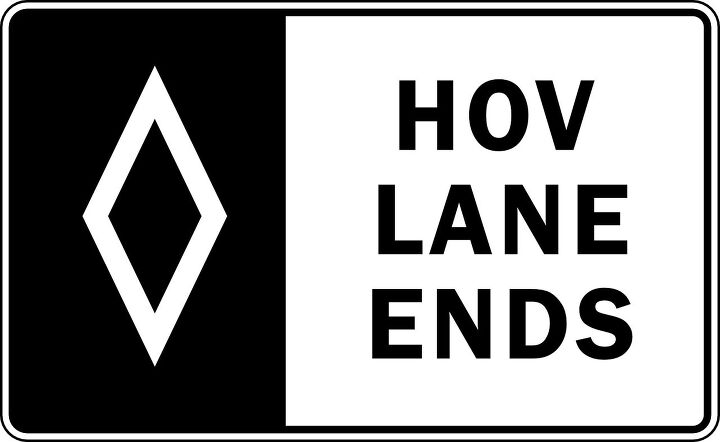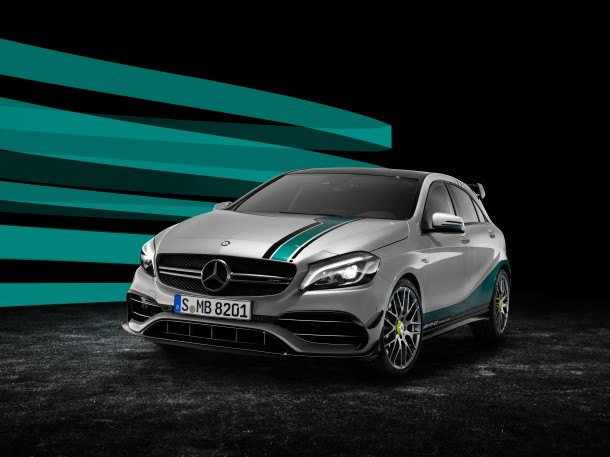#Traffic
Los Angeles Finally Snubs Electric Vehicles, Clean Air Cars Have to Pay for HOV Lane
California has been bending over backward to encourage commuters to adopt zero-emission vehicles. Los Angeles County even went so far as to offer EV drivers the opportunity to become certified to access the express lane, even when riding solo, free of charge. This immediately caused issues and transportation officials announced on Thursday they were going to have to eliminate the program to reduce congestion.
Apparently, giving zero-emission vehicles free access to the carpool lane created an influx of traffic that it was no longer able to meet the federally mandated minimum speed of 45 mph during peak hours. Officials had become concerned after over two-thirds of California’s HOV lanes couldn’t maintain the minimum speed in 2016. However, that’s not entirely the fault of EVs. Drivers who have opted to pay for use of the toll lanes without passengers now account for around half of its daily traffic, pushing it past capacity. LA is worried that frequent slowdowns has resulted in commuters becoming less interested in buses and carpooling.
Captain Obvious Finally Arrives: Ride Hailing Actually Congests City Traffic
A recurring theme among ride-hailing executives from the likes of Lyft and Uber is that their platforms will help reduce congestion in the world’s most populous cities. However, anyone actually living in these places will tell you it doesn’t appear to be working. Cities like New York were already clogged with taxi cabs but, instead of seeing all of these drivers buy personal vehicles to enlist as independent contractors for ride-hailing firms, Uber and Lyft brought in new drivers, more vehicles, and fresh competition.
Worse yet, ride-sharing alternatives like Uber Pool have moved people away from buses and trains and placed them in the backseats of cars — further compounding the problem. It turns out city dwellers who already owned an automobile didn’t suddenly decide to get rid of it, and those who were heavily invested in mass transit discovered an affordable car-based alternative.
Traffic Lights With Artificial Intelligence Could Help Your Terrible Daily Commute
Trackday Diaries: A Slight Injury to the Narcissistic Area
The forecast, to misquote Robert Cray, called for rain — but I saddled up the Anniversary VFR anyway. There’s no lane-splitting in Ohio, but there are still real and tangible benefits to riding a motorcycle on my daily commute to work. The first is time. I save between 10 and 20 round-trip minutes every day that I leave the Accord in the driveway. I can make better pace on the road, particularly downtown. The second benefit is financial: it’s $50 a year to park the bike but it’s between $9 and $18 a day to park a car. The last, and most important, is hassle. It’s an easy three minute walk from my bike to my office. From the nearest available parking garage? Ten minutes if I’m lucky, 20 if that garage is full, plus 10 flights of stairs each way on two legs that ache and crack in any weather below tropical.
Put all of that together, and it’s no wonder that I won’t drive unless there’s heavy standing water or ice on the roads. But I won’t lie; I’d ride even if it cost more. I feel less like a replaceable cog in a massive and directionless corporate cluster-bang when I’m on two wheels. And that’s why I was in a good mood when I heard the BLEAT! of the horn next to me.
Grim Start to the Memorial Day Weekend
They say that any accident that results in zero injuries is a good one, but Detroit-area residents trying to beat Memorial Day Weekend traffic on Friday probably didn’t feel that relief.
Huge backups were reported west of the city after Interstate 96 was shut down for a heartbreaking reason. It was enough to make normally stoic fire officials pause as they considered what had been lost.
Is Musk Planning a New Way of Getting Around for Us Plebs?
Not everyone can afford a Tesla, even the lower cost Model 3, so what is Elon Musk going to do for the public transit set?
Something, apparently. The Tesla founder coyly hinted at a next big thing during a talk in Norway, according to Bloomberg, leaving many wondering whether he had a plan to do away with buses.
While You Were Gorging: A Compendium of Thanksgiving News You May Have Missed
While the rest of the world warms up to our Thanksgiving tradition of football and mountains of potatoes and gravy, we must admit that the world goes on without us some days.
Thankfully, the Internet never forgets. So here’s a roundup of the stories we missed in our Tryptophan-induced naps.
How Detroit Invented Traffic Cops, Traffic Lights, No Parking Zones & Towing Your Car
Due to advancements such as air bags, driving is much safer than it was when I first got my driver’s license in the early 1970s. Even then, because of seat belts and crush zones, cars were much safer than they had been in the early automotive age. The first decades of the automobile resulted in chaotic and unsafe driving conditions. Not only were the vehicles themselves dangerous to passengers and pedestrians (three quarters of early motoring related fatalities were pedestrians, often children), in the early days it was a free for all, with the first proposed traffic laws being instituted only after about a decade after the first automobiles. Author Bill Loomis is working on a book on Detroit history and in an extensive article in the Detroit News he discusses just how unsafe driving was a century ago, as well as the role that the Motor City had in making driving safer and less chaotic. Some of those innovations continue to make drivers safe, while others continue to annoy us.
Hacking Traffic Lights for Fun and Profit!
In a few weeks, at WOOT (the USENIX Workshop on Offensive Technologies — an academic conference where security researchers demonstrate broken stuff), a team from the University of Michigan will be presenting a lovely paper, Green Lights Forever: Analyzing the Security of Traffic Infrastructure. It’s a short and fun read. In summary, it’s common for traffic light controllers to speak to each other over a 5.8GHz wireless channel (much like WiFi, but a dedicated frequency) with no cryptography, default usernames and passwords, and well-known and exploitable bugs. Oh boy. And what can we do with that?
NASCAR For The Novice (The Prequel)
I am pacing back and forth in a 200 square foot wooden building that I had exchanged for a 1996 Volvo 850 sedan back in 2008.
“What the hell am I going to write about? I know nothing about racing! Zip!”
“Well Steve, maybe we can arrange for a few interviews.”
“Would they be racers?”
“Aaahhh, no.”
“Owners? Hookers? How about the guy who fires the gun?”
“What gun?”
London Looking To Alter Congestion Charge Exemptions By Lowering CO2 Threshold
The 100 grams/km CO2 output figure is an important one for motorists in the UK. Cars that can hit this magic number are exempt from London’s daily $16 Congestion Charge, which is levied upon motorists attempting to enter London’s downtown core. But new rules may leave drivers liable for the daily fee, as lawmakers seek to change the exemption threshold to 75 grams/km.
Feds Push NY Towards Full Ban On Electronic Devices In Cars
Citing New York’s leadership in banning hand-held cell phone use in cars, NTSB Vice Chairman Christopher Hart urged the Empire State to become the first to ban all use of personal electronic devices while driving. Though careful to call it a state issue, Hart did hint that state compliance with forthcoming NTSB recommendations could be tied to federal highway funds (he has separately called for a national ban).
And indeed, New York’s legislators seemed to see the issue of distraction as an issue for federal action (but then, why not make the feds pay for it?). At the same time, everyone understands that the problem is near-ubiquitous and any full ban on personal device use in cars would be near-impossible to enforce (short of Assemblyman McDonough’s suggestion that automakers equip cars with cell-phone signal blockers)… which raises huge questions about federal-level action.
Texas: Top State Senator Says Red Light Cameras About Money
The most senior Texas state lawmaker admitted last week that he voted to save red light camera programs even though he knew they had no effect on public safety.
Ohio: Yanking Motorist Out of Car Is Not a Welfare Check
Cops in Ohio may not rip a motorist out of his vehicle to “check on his welfare.” The state court of appeals handed down a decision earlier this month in a case involving a man parked on the side of the road in a quiet Columbus residential neighborhood who was “helped” out of his car with physical force.
Al E. Forrest sat in the driver’s seat of a 2003 Ford Explorer with another man in the passenger seat as two police officers came up on either side of the vehicle. According to Officer Kevin George’s testimony, he just wanted to see if the Explorer driver was okay. The officers had no suspicion of any criminal activity prior to approaching the Explorer. When George poked his head into the driver’s window, Forrest looked surprised to see a cop staring at him through the window. George said this was a sign of “nervousness.” When George saw money in Forrest’s left hand, he ordered the man out of the SUV. This was the beginning of the legal problem for the Columbus officer.
Italy: More Officials Arrested for Photo Enforcement Corruption
A pair of senior police officers in Brindisi, Italy were arrested Tuesday in a speed camera bribery scheme. The owner of a BMW X6 blew the whistle on officers Giuseppe Manca and Antonio Briganti after a speed camera accused him of driving 160km/h (99 MPH) on state route 16, where the limit is 110km/h (68 MPH).
The driver faced a fine of between 500 to 2000 euros (US $650 to $2615) plus license points. The officers offered to make the conviction disappear for payment of 250 euros (US $327) in cash. The officers were able to erase the conviction from the speed camera logs to prevent detection of their tactics.





























Recent Comments